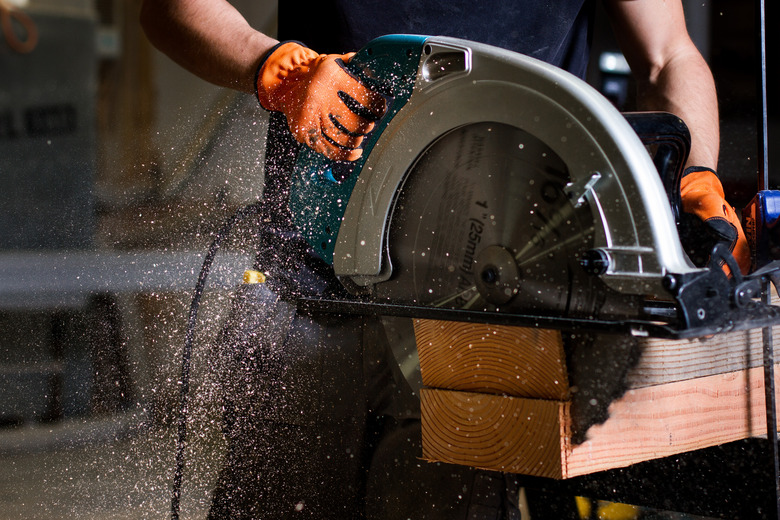List Of Wood Cutting Tools
We may receive a commission on purchases made from links.
When cutting wood, as with cutting virtually anything else, a number of tools do the job, but the right tool does it better than the wrong tool. For instance, hand saws are great for relatively small projects not requiring many cuts, while various power tools are better for cutting tree branches, making numerous curves, or cutting boards for a new deck. Having an assortment of general-purpose woodcutting tools is a good idea if you work with wood from time to time. While many more devices can cut wood, these are among the most common and most useful for general home projects.
Manually Operated Saws
Manually Operated Saws
Great variety exists even within the realm of hand saws or hand-powered saws, but owning a few essential types is often enough for typical projects. Crosscut and rip cut saws are the classic type you may think of when picturing a saw; these have a long metal blade thickest near the handle end, with teeth on the bottom of the blade. Crosscut saw teeth cut across wood grain, as when cutting down tree limbs, while rip cut teeth are made to cut along the grain. A coping saw is equally useful and has a very thin, replaceable, and easily damaged blade at the bottom of a metal arch and with a protruding wooden handle. This delicate saw is best used for cutting curves and angles on smallish projects and can be used to make cutouts within a solid slab of wood.
A bowcut saw also has a replaceable blade on the bottom, but this saw is larger and has much larger, gnarly looking teeth. It's best for rough cuts, such as cutting long branches into shorter pieces. Japanese pull saws have the blades angled so the cutting happens as you pull the saw toward you, rather than as you push it, which helps reduce muscle fatigue. It's great for straight cuts across the ends of trim and crafty projects.
Power Saws for Wood
Power Saws for Wood
A chainsaw is great to own if you cut a lot of logs or large tree limbs, as it excels at making rough cuts where accurate measurements aren't important. A band saw with a wood-cutting blade is great if you have a workshop and have the space for it, though portable models exist. It's ideal for cutting curves and somewhat straight runs through relatively thin wood, and its blade is a large metal band that travels through the enclosed areas of the saw.
A jigsaw allows for similar types of cuts, although it's a bit harder to cut accurately as the entire device is handheld and the blade moves up and down. A reciprocating saw works in similar fashion, but with a larger blade and a different handle layout and is best for demolition work or projects not requiring accuracy.
A circular saw has a round sawblade that spins and cuts straight lines through sheets of plywood or across boards. It's a good tool when lots of similar cuts are needed on a larger project. Miter or mitre saws are like circular saws except they're attached to a base; you move the wood atop the base or table and lower the saw, attached to an arm, to make a cut across it or at an angle if you have a compound miter saw. Table saws are also similar in that they use a round blade, but they have a much larger table than a miter saw, and most of the saw blade is hidden beneath the top of the table. The saw blade spins in place, and you move the boards across the table saw to cut them.
Other Wood Cutters
Other Wood Cutters
Depending on your definition of "cutting wood," both wood chisels and axes chop or cut wood too. Chisels are good for removing small chunks at a time, while axes are usually used for just breaking wood into smaller pieces, as may be the case with logs. Oscillating and rotary tools have ends that can be swapped out, turning the devices into saws, sanders, grinders, and the like, depending on which attachment is in place. Oscillating tools vibrate the flat, squared saw attachment back and forth to cut things, while a rotary tool spins a tiny saw blade disc perpendicular to the tool to cut thin wood.
